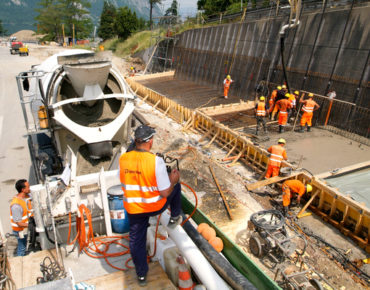Machine Learning Helping Indiana DOT Save Millions of Dollars by Bundling Expensive Road Projects

For decades, the Indiana Department of Transportation has analyzed and grouped together highway projects and their costly budgets to find ways to save millions of dollars each year on road construction.
The project bundling – analyzing and matching up projects in nearby locations so they can be bid and built as a package deal for significant cost savings – has always been conducted manually by Indiana DOT (INDOT) engineers and staff members. The employees had to review all the projects, painstakingly put them together in groups and then see where they could be bid and built together for cost and process efficiencies.
It was a labor-intensive and difficult process that could only bundle projects about a year out because it was too complicated to do over longer stretches of time due to the slow manual analysis that was involved.
There just had to be a better way.
In this case, it came through serendipity.
Two years ago, an employee of the Federal Highway Administration (FHWA) learned about a Boston-based software vendor, Foro, that was doing work with AI and machine learning to scrape out contract intelligence insights for businesses from unstructured data.
The FHWA employee quickly contacted Foro to let the company know about available federal research project funding that could be used to bring its AI and ML work together with INDOT’s road project bundling needs to seek ways to solve these huge contract bundling problems for transportation departments around the nation. INDOT was already known for its road project bundling prowess and successes.
“It's the brainchild of the Federal Highway Administration, which said ‘we have research money to learn more about contract bundling,’ which was a very hot topic for them,” Brett Boston, the managing partner for Foro, told EnterpriseAI. “We had Indiana, who was the leader in contract bundling. And for them, they were looking to go to the next level. For us, we had contract software that would look at unstructured data, and the three of those things kind of came together. It's more of a team effort to come up with that idea.”
Using Foro’s AI and ML technologies and research project funding from the FHWA, software was developed to replace the formerly manual contract bundling processes with an algorithm-based system that now allows massive road projects to be bundled together over multiple years, saving even more money for transportation departments, said Boston.
“This is billions, this is millions of dollars” at stake, he said. “Bundling can look across thousands and thousands of potential projects that are in that road maintenance database” and then analyze and group them together in days to find the projects that can be paired together for savings. “It can say, ‘look at these, you're going to do this in 2026 and you're going to do this one in 2027, why don't you bundle them together and you're going to get a much better bid, you're going to close the road once and your traffic control costs go way down.’”
Bundling such projects is not new, said Boston. “Doing multi-year, multi-jurisdictional bundling and adding the complexities in it that allow machine learning to do the heavy lifting – that's the real issue here.”
The software was built using the manual bundling data that INDOT had already generated over many years, according to Boston, using data from about 4,000 previous projects.
The software and training models were built and run using the data and the result was favorable – the nascent system found another $120 million in bundling savings that could have been uncovered and put toward other projects had the ML system been in place in the past, said Boston.
That opened many eyes at INDOT, he said. “When you give somebody a piece of software that solves a big problem, they immediately jump to ‘what's next,’” said Boston. “What was next is they wanted us to start bundling across multiple years,” which had been difficult to do with the previous manual bundling processes.
“The ML is really good,” said Boston. “ML will outperform an expert on any one thing. It's not going to be able to tell you what to plant in a garden, but it can tell you how to handle bridges based on the criteria you give it. And then it gets really super smart.”
Louis Feagans, INDOT’s managing director of asset management, said the biggest benefit of using AI and ML today is the flexibility and extra cost savings from being able to plan project bundling three to four or more years into the future.
The processes have also reduced bundling workloads for INDOT employees, he said. “Instead of taking two to three weeks to do it, we're doing it in a few days. So that's freeing up staff time.”
For years, INDOT has been a leading highway project bundler around the nation, participating heavily in the FHWA’s Every Day Counts programs, which are designed to help states and local governments across the nation find innovations to shorten project delivery processes, enhance roadway safety, reduce traffic congestion and integrate automation. One of the innovations in Every Day Counts is highway project bundling.
Road officials in many other states are hearing about the successes INDOT has been having with ML and AI, which means that Feagans and his staff have been doing more presentations to other municipalities about the technology.
“Yes, we've started to do those through Every Day Counts,” he said. “We've given a presentation to Illinois and we’ve done some nationwide ones.”
Using AI and ML, INDOT is increasing its project bundling savings by about 40 percent or by about $108 million over the next four years, according to Feagans.
INDOT had never used AI or ML technologies before this project.
“I liked the concept,” he said. “I thought it would be a pretty cool process if it worked.”












